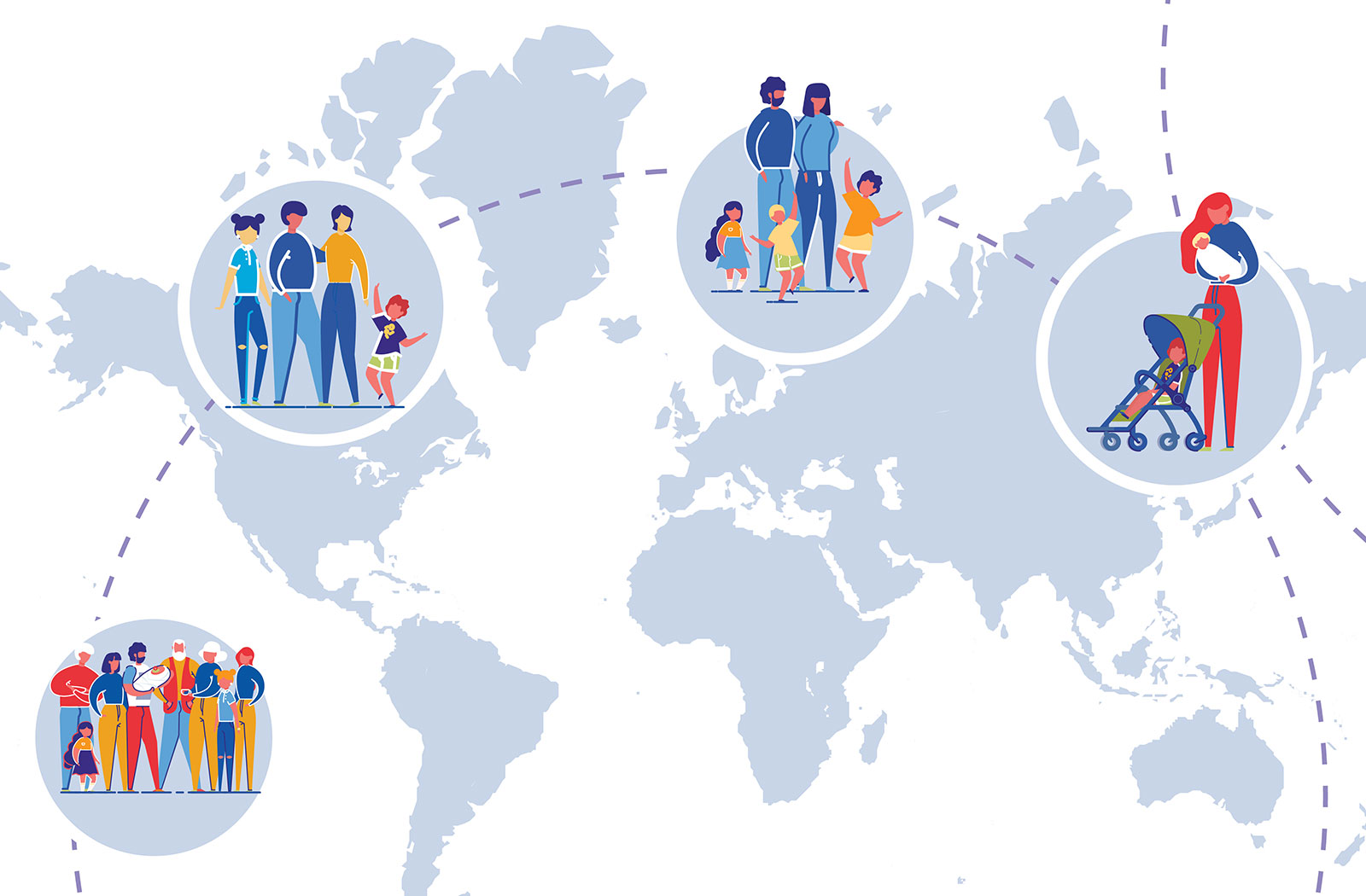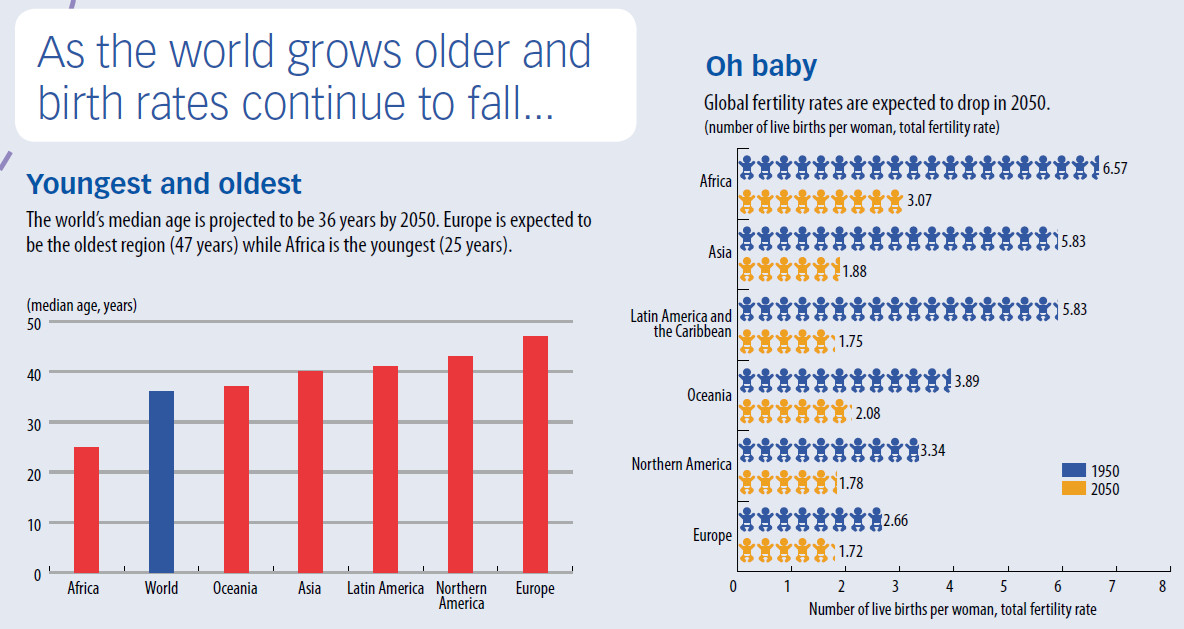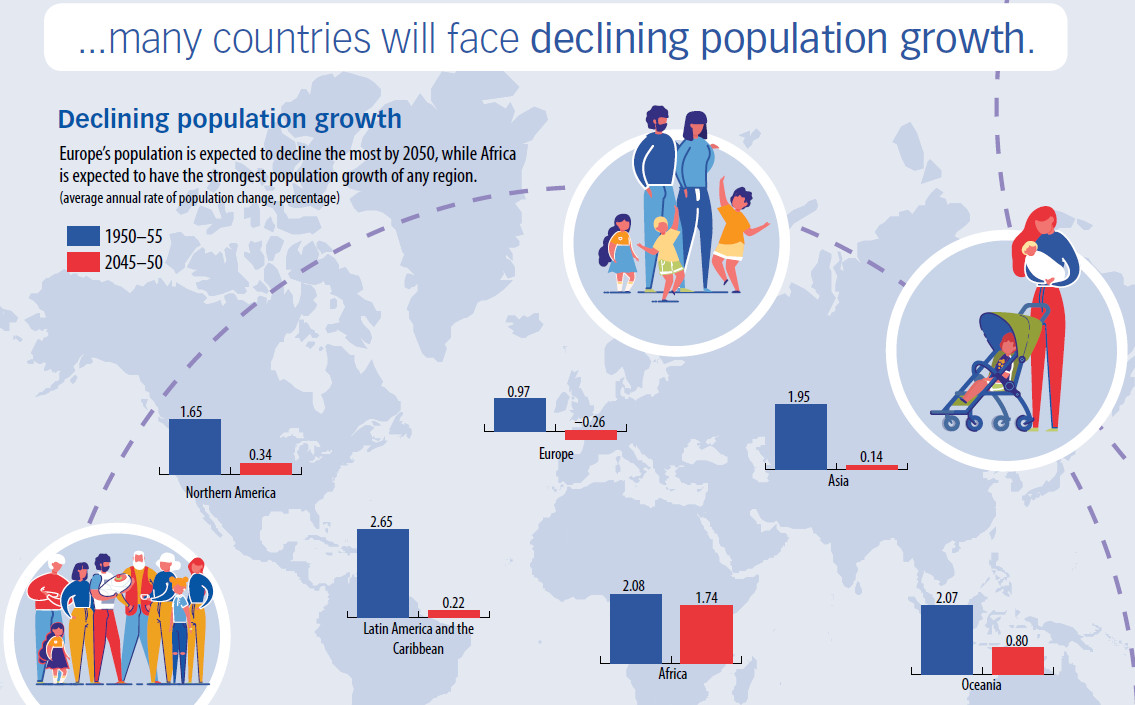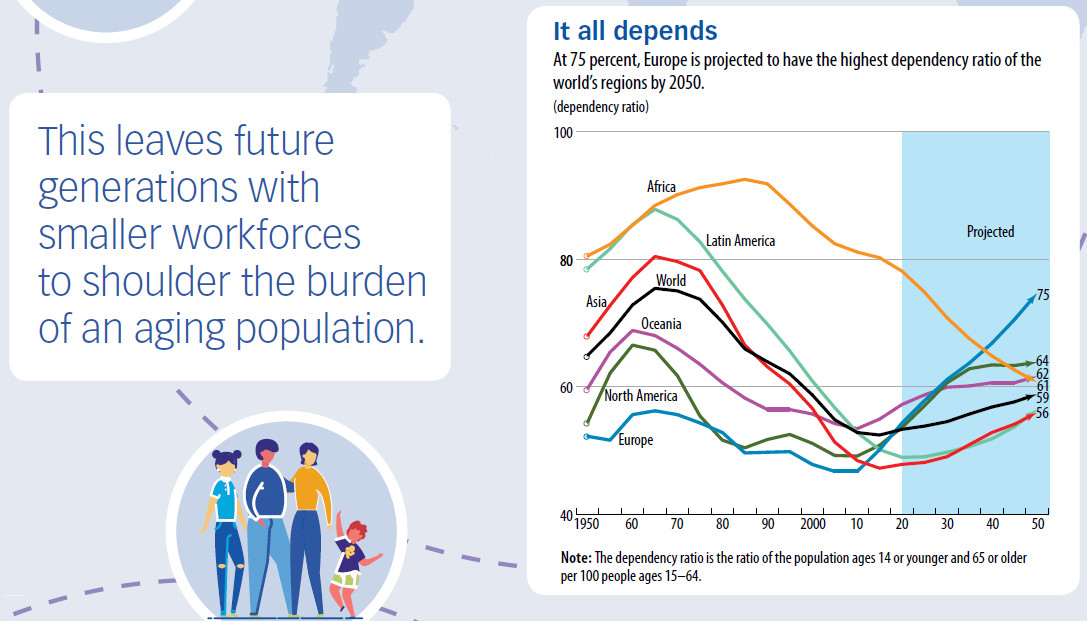Picture This
Coming of Age
By 2050, as birth rates continue to drop and people live longer, the world’s population will change

In just 30 years, the world will look very different. Since 1950, the global population has grown from 2.5 billion to more than 7.7 billion. By 2050, however, that number is projected to reach just 9.7 billion. This is because population growth is slowing—from about 1–2 percent to 0.5 percent annually—largely because of falling birth rates and aging populations, according to the Pew Research Center’s analysis of the United Nations’ World Population Prospects 2019 report.
The report finds that by 2050, global fertility is expected to be 2.2 births per woman, down from 2.5 today. This rate is inching closer to the replacement rate of 2.1—the number of births per woman needed to maintain a population’s size.
Meanwhile, the world’s median age is projected to be 36 by 2050, up from the current age of 31. Europe is projected to have the oldest median age, 47 years, in 2050. Surprisingly, Latin America and the Caribbean, long known for its younger population, is expected to see the biggest shift, with its median age, currently 31, poised to increase to 41.
Many countries will face a shrinking population. For Europe, this challenge may come sooner. The region is projected to face the highest dependency ratio—the number of people of nonworking age (over 65) compared with those of working age—by 2050. At 75 percent, this ratio is higher than for any other region.
In contrast, Asia and Latin America and the Caribbean are expected to have the lowest dependency ratio, 56 percent, in 2050. Not all populations are shrinking or getting older, though. Africa—the only region whose population is expected to grow more than 1 percent a year—will have the youngest median age, 25, by 2050.
Opinions expressed in articles and other materials are those of the authors; they do not necessarily reflect IMF policy.










